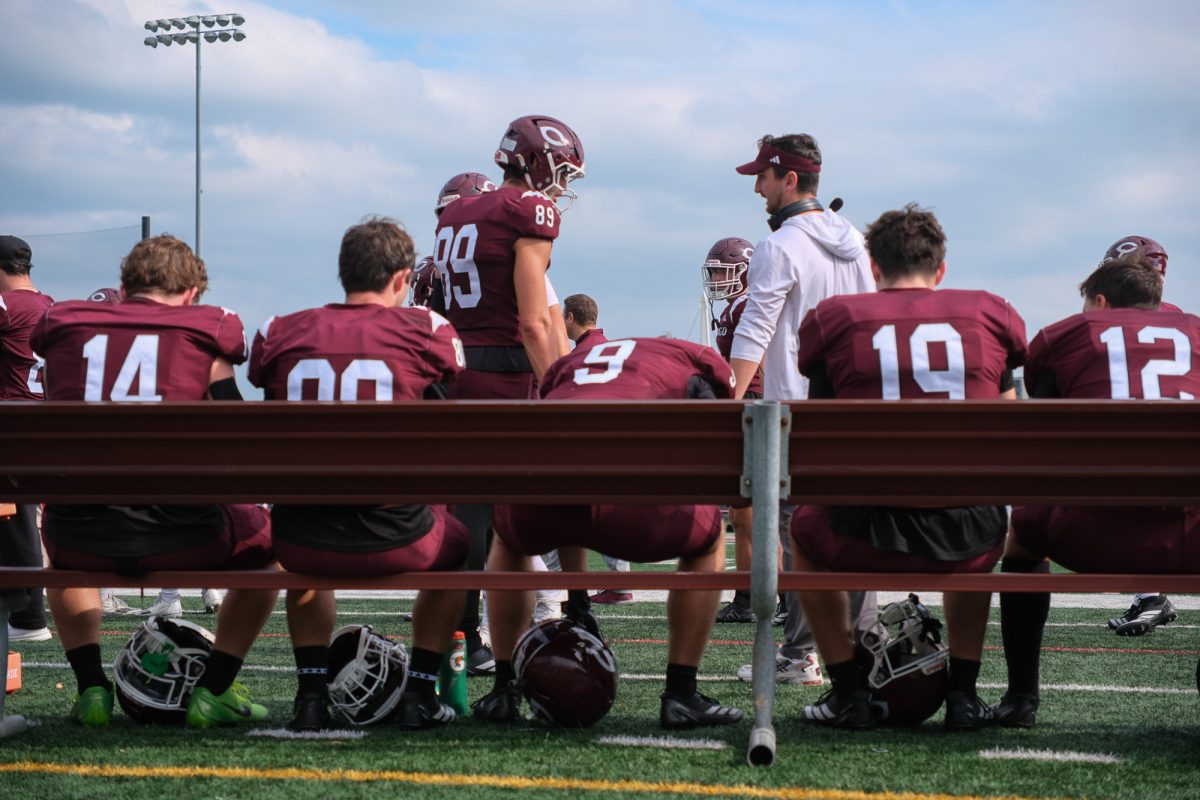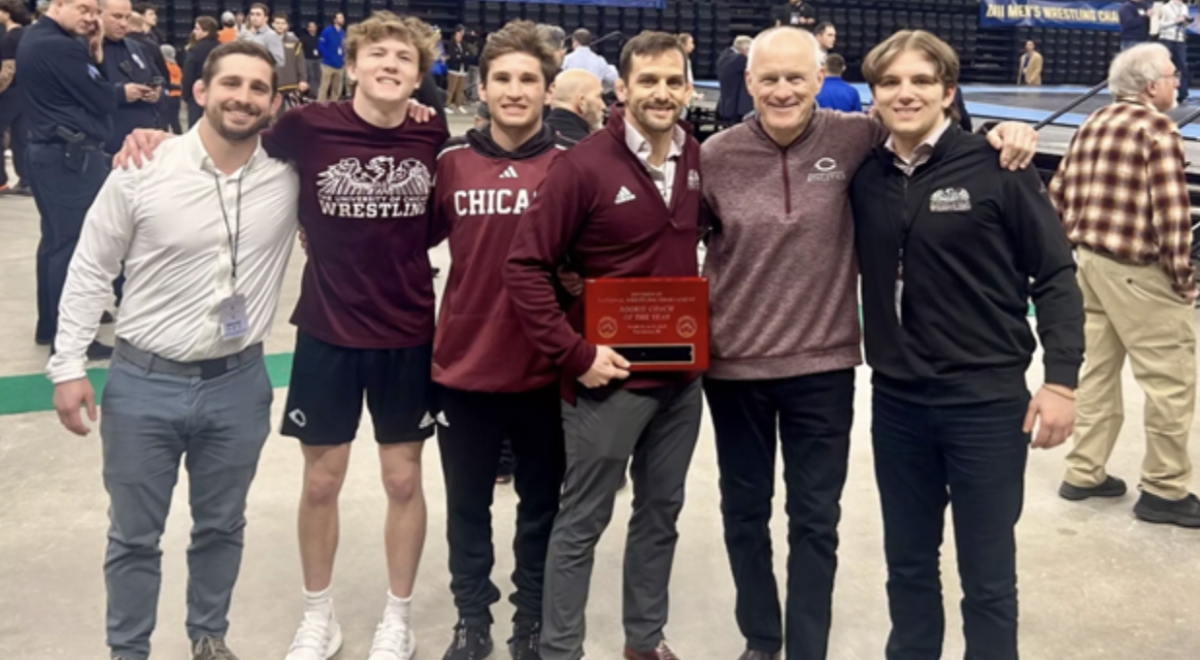In the first two parts of the Maroon’s “State of our Athletics” series, we examined the ups and downs of U of C sports on the field and on campus. But to get a full picture of where the athletic department is and where it’s going, we have to go beyond the South Side. Chicago has been widely cited as a model for D-III sports and for the NCAA as a whole. But the definition of what makes for an ideal program at our level is currently under a great deal of scrutiny. Much like the Maroons, college sports is going through some growing pains of its own—a transition that may end in a breakup of DIII.
Part Three: The National Picture
What’s The Problem?
Word of a fundamental restructuring of the division has been spreading like wildfire since January, starting with recommendations by a working group headed by University of Georgia President Michael Adams. With an eye on addressing membership growth in the long term, suggestions have included the option of setting up a fourth division. But discontent has been brewing in DIII for many years.
The NCAA has maintained its current trisected structure since the founding of DIII in 1973, when it had about 600 member institutions. There are now more than 1,000 schools in the association, with more expected to make the move up from the National Association of Intercollegiate Athletics (NAIA). The lowest division, marked by its rules against athletic scholarships and focus on integrating student-athletes into the general student body, has been hit with the bulk of that growth. It has added 100 members in the last 15 years, bringing the total to more than 420, with as many as 50 more expected to come in the next decade.
With DIII maintaining the lowest requirements for number of sports sponsored, it has attracted many new members from the lower-rent NAIA and has become a bigger tent than some are comfortable with. Member schools are divided by such varied factors as level of sports sponsorship, size of student body, financial resources, geography, and athletic and academic philosophy. As a result, there has been a distinct three-way split in voting on a variety of matters. Approximately a third of the division encourages fewer sports and favors less restriction, a third supports a continuation of the status quo, and the final third is pushing for schools to sponsor more sports and for more regulation. The last group in particular has a number of members deeply unsatisfied with the current direction of the division.
“We already have the smallest piece of the budget, and we’re trying to feed a lot of people with that money…. [DIII has] become a dumping ground for institutions that just don’t match up with each other,” said North Coast Athletic Conference (NCAC) Executive Director Dennis Collins, who is among the primary advocates for a DIV.
“About a third of the division sponsors 10 sports, and they want to tier their sports. That doesn’t work for a school like ours with 22 sports. Those are the kind of conflicts we’re dealing with constantly here…and I don’t see that getting better.”
DIII hasn’t been alone in problems arising from expansion. In recent years, DI has picked up 49 schools from Division II, and a fall 2006 study by the Presidential Task Force on the future of DI indicated that only approximately 20 of those new members are financially profitable. The mid-level branch has been wracked by out-migration and, according to NCAA Vice President for DIII Dan Dutcher, is going through a period of “rebranding and redefining the value of the division.”
With these association-wide challenges and the NCAC leading conferences in their call for changes like a cap on the membership of DIII, there was a growing consensus that something needed to be done. The Adams working group, which began its study in October 2005, acknowledged that consent in its report to the NCAA annual conference. As a response, the association formed an executive committee chaired by University of Dayton President Daniel Curran to recommend possible options, including a creation of a DIV or a subdivision, for discussion starting in January 2008 and a vote in January 2009.
What’s Next?
With that sort of timeline, the U of C won’t have to make any choices any time soon. But the athletic department won’t be able to avoid picking a side in the long run. With the NAIA coming under new management, school presidents gaining influence over athletic directors in the NCAA, and the options on 2010–2013 broadcast contracts with CBS and ESPN up for renewal, the time is ripe for real action.
“The stars are aligning to create some change for the whole association. I think everything’s coming together perfectly,” Collins said.
Moreover, reformers like Collins, Centennial Conference Executive Director Steve Ulrich, and D-III President’s Council Chairman and Franklin and Marshall College President John Fry, are not planning on letting this opportunity go. Several among that group have been quite vocal about splitting the division in order to free schools with different priorities from being tied to the same rules. In their view, the move would mainly allow some schools to sponsor more sports that involve more of the student body without pushing other programs beyond where they are interested in going.
For the immediate future, the debate will cover the implementation of wholesale changes or sticking the original plan. If Collins and company get their way and members vote for radical adjustments, discussions will move on to the creation of a new division or a subdivision to DIII, much like that of DI–AA for football. The former option would set up separate championships and legislative standards, along with different frameworks for academic reporting and membership requirements. Creating a subdivision would mainly keep everyone under the same governing principles while separating out championship opportunities.
“Most groups haven’t had a chance to hash out which type of change they want,” Dutcher said. “The groups are divided on change, not yet between options.”
Some of them actually have made up their minds. Collins, for one, rejected the idea of a subdivision, saying that it was an idea that was only discussed when there was no possibility of getting funding for a fourth division.
Where does the U of C stand on all of this? For the moment, athletic director Tom Weingartner is avoiding taking a stand until he receives more information. For his money, change is far from inevitable.
“I think that the interest in creating a ‘Division IV’ has been mostly driven by a relatively small number of people and institutions, and I think that when the NCAA really begins to look at this in a formal matter, people would be surprised how many institutions are not interested in having significant change,” Weingartner said. “The membership has been sort of caught off guard by this, and we’re really just catching up.”
Collins greatly disagreed with this view and suggested that there could be good reason for the move. According to him, the anti-reform group may well include and even be led by the UAA.
“Quite frankly, we’ve had a membership cap proposal, and that alone generated five or six front page stories in The NCAA News over the past few months. If you’re not reading that, I don’t know what you’re reading,” he said. “Change is difficult, and higher institutions are conservative.”
UAA Executive Secretary and member of the DIII-level working group Dick Rasmussen agreed with this assessment of the conference’s position, but he refrained from calling out the league as being behind the ball.
“Our member institutions are happy with DIII, and in general don’t see any major issues that need to be addressed out of the normal things that come up in the course of wanting to adjust this or adjust that. I think the UAA schools are very comfortable with the diversity of DIII,” Rasmussen said.
The UAA is in a somewhat unique position, perhaps only shared by the New England Small College Athletic Conference, of having schools united by a deeply held common academic and athletic philosophy. Given that the U of C focuses on its conference-level affiliation and that the conference is likely to stay together no matter what happens, they have been less troubled by some of the problems that have plagued other groupings.
But that may be coming to an end. Collins bluntly stated that the scheduling deal that will allow UAA football teams to fill out their non-conference schedules with NCAC schools will be “out the door” if the two conferences end up in different divisions, and there is no doubt that the conference will have a major say in if and how a split scenario unfolds. They’ll have that voice soon, as competition in the new structure could conceivably begin as soon as the 2010–2011 academic year, though Dutcher commented that it would likely take from two to five years for it to come into full effect.
While the current wait-and-see stance of the U of C and its league partners seems prudent for now, that may not last.
“Here’s the big thing: People need to start paying attention a little more. This is going to happen, and they need to get on the bus; it’s leaving the depot,” Collins said. “I don’t want my conference in a playing division with 600 members; it’s not going to work, and I think people have to recognize that here’s a great opportunity. We need to start planning for the future like they did in 1973 [with the creation of Division III.] We’re way overdue for a similar sort of reorganization.”








